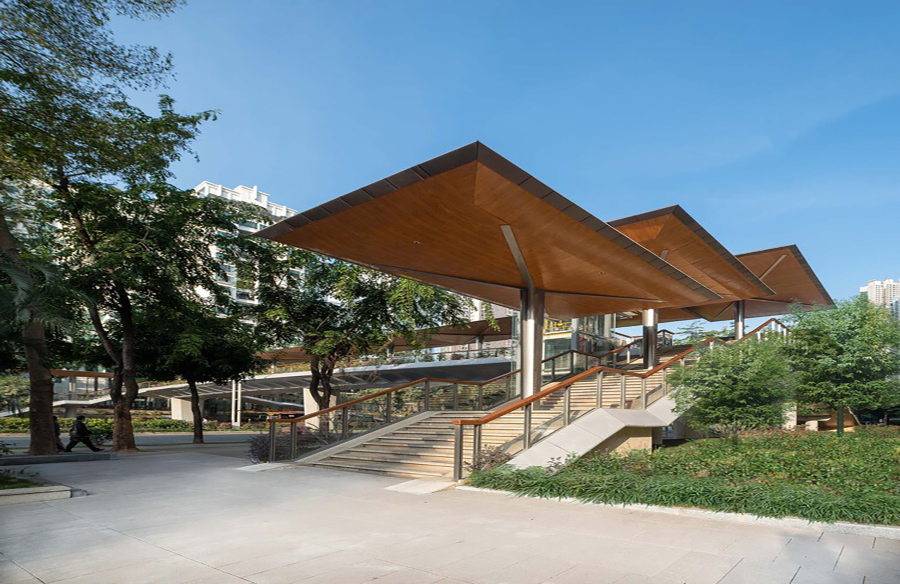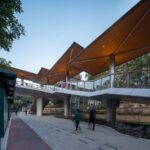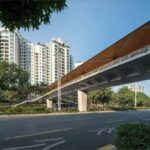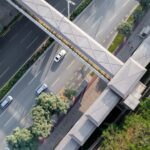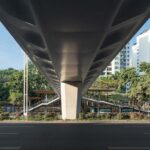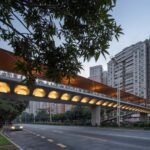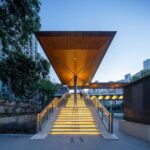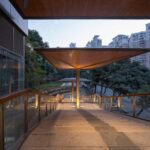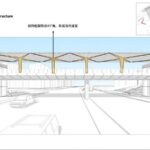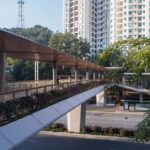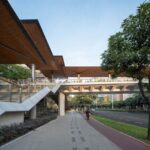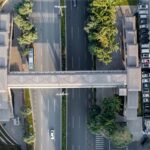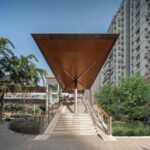Introduction
The Shenzhen Shuiwei Pedestrian Bridge, situated on Fuqiang Road in Futian District, Shenzhen, spans a distance of 70.5 meters. Serving as a vital link between Huanggang Park, educational institutions, and residential areas, this bridge aims to provide pedestrians with a safe and efficient means of crossing amidst increasing traffic congestion. Designed by ATDESIGNOFFICE, this project integrates innovative features to enhance the pedestrian experience while promoting sustainable urban mobility.

Unique Design Elements
Single-Column Canopy
Diverging from traditional bridge designs, the Shuiwei bridge features a single-column umbrella canopy, providing unobstructed views of the surrounding landscape. This design allows pedestrians to appreciate the scenic beauty of Shenzhen while traversing the bridge, fostering a sense of connection with the city’s natural environment.
Prefabricated Construction
To mitigate construction-related disruptions, prefabricated construction methods were employed. Large steel prefabricated modules were utilized for the main bridge canopy, ensuring efficient assembly and minimizing on-site construction time. This approach not only enhances construction safety but also reduces traffic congestion and air pollution, promoting sustainable development practices.
Rainwater Harvesting and Sustainability
The bridge incorporates rainwater harvesting systems, with rainwater from the canopy collected and channeled into flower troughs on the bridge deck. This sustainable initiative not only enhances the aesthetic appeal of the bridge but also contributes to water conservation efforts in the area.
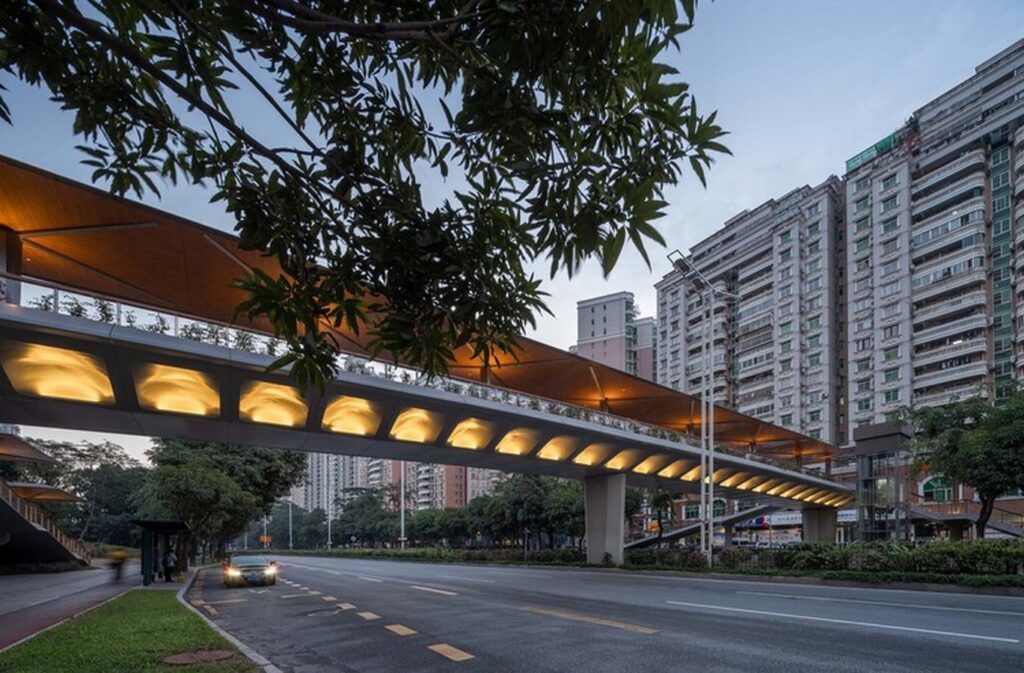
Integration with Nature
Planter troughs installed along the bridge’s handrails accommodate a variety of plant species, creating a vibrant green corridor that changes with the seasons. Additionally, the bridge ceiling, adorned with aluminum panels resembling wood texture, blends harmoniously with the surrounding landscape, providing shade and shelter for pedestrians.
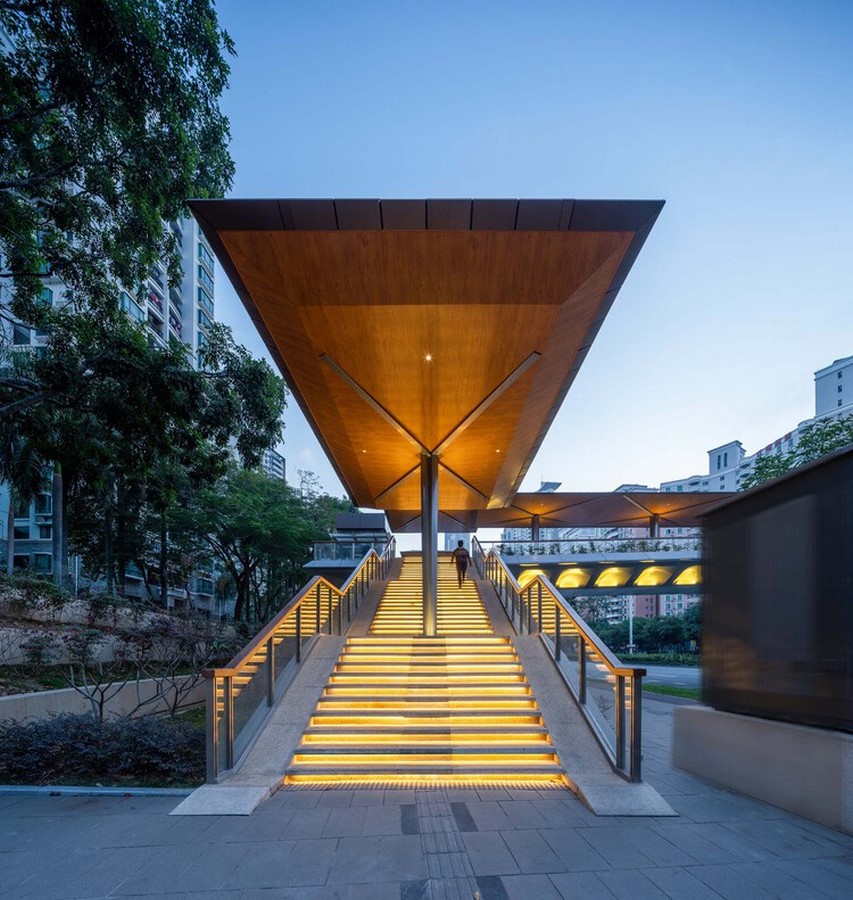
Lighting Design and Material Selection
At night, the bridge comes alive with unique lighting effects that accentuate its architectural features. X-shaped light and shadow patterns beneath the umbrella canopy create a captivating ambiance, while concave coffer lighting adds visual interest to the bridge’s underside. Furthermore, the use of high-quality roofing materials, such as the Titanium Standing Seam Roof System, ensures durability and structural integrity, enhancing the bridge’s longevity.
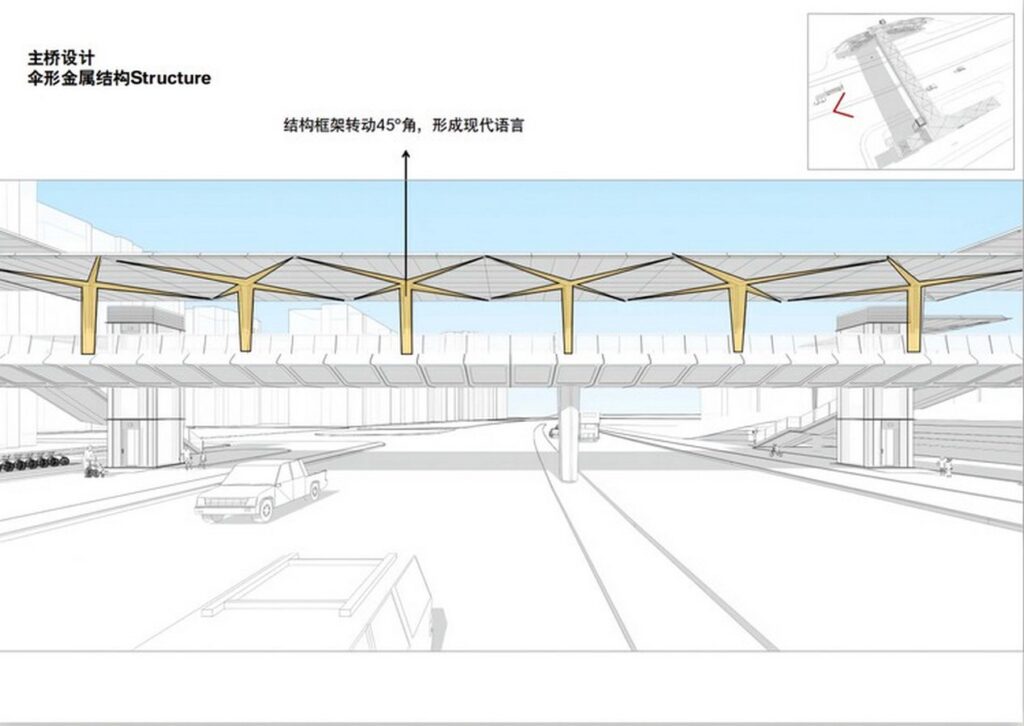
Barrier-Free Accessibility
Incorporating barrier-free design principles, the Shuiwei bridge features vertical elevators on both sides to accommodate elderly individuals, persons with disabilities, and those carrying luggage or bicycles. This inclusive approach ensures that the bridge is accessible to all members of the community, fostering social inclusivity and equal opportunity.
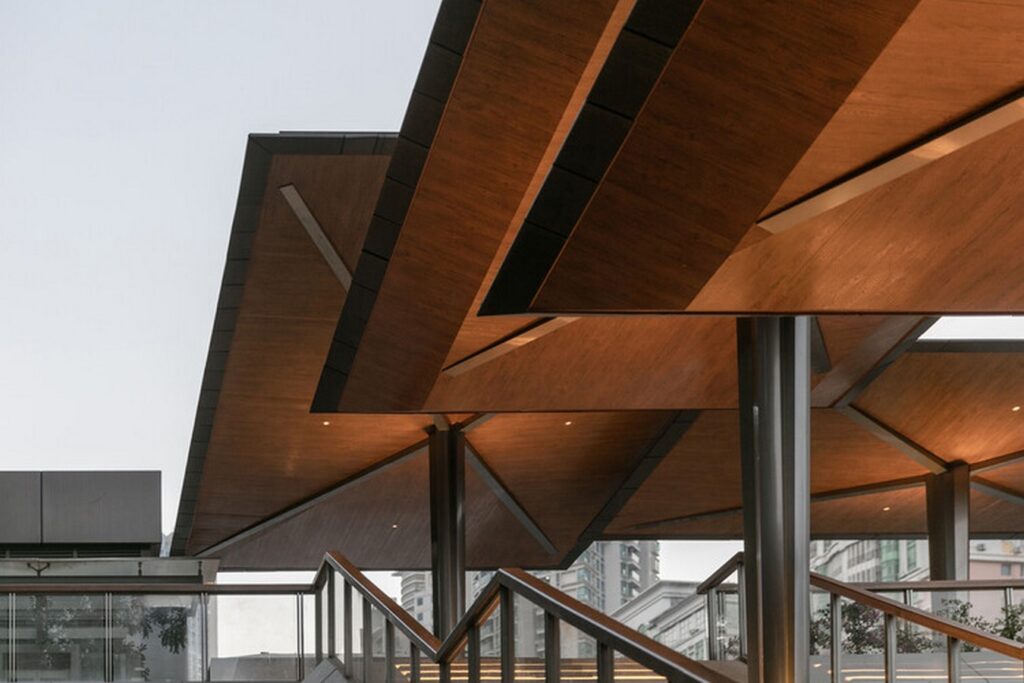
Conclusion
The Shenzhen Shuiwei Pedestrian Bridge stands as a testament to innovative design and sustainable urban development principles. By seamlessly integrating aesthetic elements, environmental sustainability features, and barrier-free accessibility, the bridge not only enhances pedestrian mobility but also fosters a deeper connection between urban dwellers and their surroundings. As cities strive to create more livable and inclusive environments, projects like the Shuiwei bridge pave the way for a more harmonious coexistence between humans and nature in urban landscapes.


